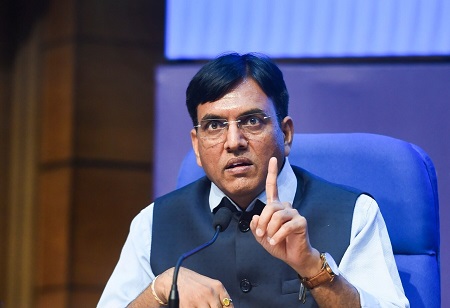Janifha Evangeline | Monday, 01 August 2022

With an aim to strengthen, MSMEs in the pharmaceutical industry, the government recently launched three schemes. Mansukh Mandaviya, the Union Minister stated that these schemes envisage setting up effluent treatment plants in the cluster, common research centres, and technology upgradation, for the pharma Micro, Small, and Medium Enterprises.
The union minister also stated that small firms should be able to upgrade their facilities to global manufacturing standards. "I believe the pharma MSME industry will greatly benefit from the schemes. The new schemes have many benefits that will go a long way in making the Indian pharmaceutical industry, Atma Nirbhar, more resilient and future-ready," Mandaviya, who heads both health as well as chemical and fertilizers ministries, said.
The Indian Pharmaceutical industry plays a significant role in the international pharma market. While India is the third largest producer by volume and 14th largest by value, it is also the largest provider of generic medicines in the global market, occupies a twenty percent share in international supply by volume, and has the highest number of US-FDA compliant pharma plants outside of the United States. The country is home to 3000 plus pharma enterprises with a strong network of over ten thousand five hundred production facilities & highly skilled resource pool.
The total turnover of this industry was Rs 289998 crore for 2019-2020, while the exports were Rs 146260, and imports of pharmaceuticals were to the tune of 42943 crores in the same year. The major segments of the pharma industry comprise OTC medicines and API/Bulk drugs, biosimilars & biologics, generic drugs, vaccines, and Contract Research & Manufacturing. The total turnover of this industry was Rs 289998 crore for 2019-2020, while the exports were Rs 146260, and imports of pharmaceuticals were to the tune of 42943 crores in the same year. The major segments of the pharma industry comprise OTC medicines and API/Bulk drugs, biosimilars & biologics, generic drugs, vaccines, and Contract Research & Manufacturing.
The Indian pharma industry has not just proved its capability in India but it has proved its mettle internationally too. In the present scenario, technology is seen as a game changer. This is because technology helps in bringing transparency as well as efficiency across manufacturing and the regulatory segment. The pharma industry has shown a robust manufacturing & research capability in the big business outsourcing for leading Indian and MNCs. Amidst the consistent performance of big pharma giants, the MSMEs have also been the major growth driver and indicate the huge cost advantage to manufacture high-quality products.
Credit-linked capital & interest subsidy for technology upgradation of Pharma MSMEs Under the banner of ‘Strengthening Pharmaceuticals Industry, the chemicals and fertilizers ministry rolled out the schemes. While these offer credit-linked capital & interest subsidy for technology upgradation of Micro, Small, and Medium Enterprises units in the pharmaceutical sector, they also provide support of up to Rupees twenty crores each for common facilities. This includes testing labs and ETPs, and research centres, in pharma clusters.
"It (schemes) will increase investment, encourage research and innovation and enable the industry to develop futuristic products and ideas, the minister said, adding that the government is working to enhance the ease of doing business and also reduce compliances to help the industry grow at a rapid pace.” The project management consultant for implementing this scheme will be SIDBI. The Pharmaceutical Technology Upgradation Assistance Scheme will enable pharmaceutical Micro, Small, and Medium Enterprises with a proven track record for upgrading their technology.
Strengthening the existing pharmaceutical clusters’ capacity Likewise, the Assistance to Pharma Industries for Common Facilities Scheme will be buttressing and strengthening the current/existing pharmaceutical clusters’ capacity in order to promote sustained growth. It also renders for the assistance of up to seventy percent of the approved project cost or Rupees twenty crore, whichever is less. The grant-in-aid would be either Rupee twenty crore per cluster or ninety per cent of the project cost, in the case of the Himalayan & northeast region, whichever is less.
What the Pharmaceutical and Medical Devices Promotion and Development Scheme may involve is the preparation of study reports. Further, these reports would be related to topics of importance for the Indian pharma & medical device sector. The main aim of PMPDS is to build a database of the pharma & medical device industries. To cater to evolving and growing requirements across international markets the Union Minister asked the industry to keep upgrading accordingly and emphasized the significance of moving to ‘Value from Volume.’ While the importance of demand-based research was also stated by the union minister as the need of the hour and encouraged greater linkage of the industry with academia, it was stated that forty percent of particular/selected participants in the PLI scheme for pharmaceuticals belonged to the Micro, Small and Medium Enterprises category.
The road ahead Going forward, Micro, Small, and Medium Enterprises should scout for collaborations in order to grow and the pharma sector has to leverage best practices as well as participate collectively for huge opportunities at the global level and meet all the required quality management systems & regulatory expectations.